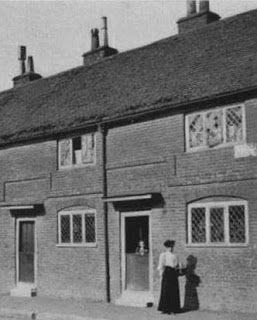You are currently browsing the monthly archive for June 2015.
There was considerable publicity heralding the re-opening of Dreamland on 19th June ten years after it had closed. The long campaign to save the amusement park, which claims to be Britain’s oldest dating back to the 1920s, was magnificent. It managed to see off property developers, Tesco’s plans for a superstore on the adjacent site and arson attacks that damaged the Grade 11 listed scenic railway.
The fine Georgian architecture around Margate’s Hawley Square, built for the gentry in 1762, reveal its wealthy past. In the post war period it became a popular holiday resort and day trip destination for the workers from London. Margate’s heyday was the 1950s when only the extremely wealthy could afford a foreign holiday. The restoration of Dreamland is an evocation of that period. My 1950 copy of Ward Lock’s guide to North East Kent only has a short description:
“Dreamland Park, where Margate is at its merriest. From skating rink, to skittle alley and from “joy wheel” to miniature and scenic railways, all the fun of the fair is found here.”
I visited on the 26th June and from across the bay I could see that the “joy wheel” was not turning. Undeterred I carried on with my quest to visit Dreamland. The banners flying from the lamp posts in the new corporate colours lead you along the wide sandy bay to the fun palace.
Impressive retro branding for the latest attraction. The outside of the distinctive entrance still needs quite a lot of work. Posters of images from the 50s and 60s illustrate good old vintage fun.
A small notice on the door confirmed that Dreamland was closed but would be open again at the weekend. Close by me were a group of disappointed teenagers who had come on a day trip from London and were not happy. Armed with my camera I walked around the perimeter trying to get a glimpse of the rides.
My day wasn’t a complete waste as there was a very good Grayson Perry exhibition at the Turner Contemporary. Margate still has that down at heel feel once you get out of the old town but I hope that Dreamland will be another attraction that contributes to its transformation.
Over the last decade or so property developers have become the dominant force in shaping the Capital. It wasn’t always like that; in the past many of the buildings that define the city were built by philanthropists. Explore most areas in London and you can still see the almshouses, social housing, schools and libraries built for the good of the wider community.
I went on such an exploration of my local High Street. Philipot Path, an ancient right of way, runs parallel and behind Eltham High Street. Wedged between Sainsbury’s car park and Philipot Path are the Thomas Philipot Almshouses. They are obscured from the path by a six foot wall and are not visible from the car park. Stand on your tip toes you just might see some elegant chimney pots. The entrance to the almshouses is difficult to find, it took me two attempts. Hemmed in by the car park, hard surfaces and the detritus of the High Street shops are an elegant and grand set of buildings which are hidden in plain sight.
Thomas Philipot was a local landowner who bequeathed funding for six almshouses for poor people living in the parishes of Eltham and Chislehurst. Originally, the almshouses were on the High Street and were built 1694 where they remained until 1926.
Woolwich Borough Council purchased the almshouses in order to widen the High Street. They were rebuilt on the current site in 1931. When they were built they backed on to the convent school run by the Sisters of Mercy (now Sainsbury’s car park). Sainsbury’s bought the site in the 1960s and a new secondary school, St Thomas More opened 1964 close by.
The original convent can still be seen on the High Street a large imposing white building now St Mary’s Community Centre. The first Convent of Mercy in England was opened in Bermondsey in 1839 by Mary Catherine McAuley who founded the order. She had inherited a considerable fortune and chose to use it to build a house where she and other compassionate women could take in homeless women and children to provide care and an education for them. The Eltham convent was a branch house of Bermondsey and it was opened in 1874. In 1946 they opened an Approved School close by in Glenure Road, now St Mary’s Primary School. An Approved School was a residential institution to which young people could be sent by a court for committing offences or sometimes because they were beyond parental control.
Now the area is dominated by Sainsburys but its worth taking a closer look and discovering these gems left as a legacy to a philanthropic past.
** Image from http://chorltonhistory.blogspot.co.uk/2014/12/making-claim-to-elthams-history.html










